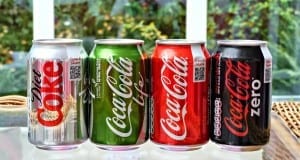
Sugary soft drinks have become ingrained into pop culture as a symbol of good times and good memories. The emotional attachment to soft drinks has been cultivated through highly successful marketing and distinct, recognisable sensory experiences. Sugar is a big contributor to the taste and texture for a myriad of popular soft drinks, however, increasing scrutiny and concern from health bodies, coupled with regulation and taxation on sugar from government drives the demand for sugar-free alternatives which still meets the expectations of the consumer, and will kick start that emotional high.
The texture and mouthfeel of soft drinks is significantly influenced by the friction characteristics of the tongue against the palate. Tribology, the study of the friction and lubrication of rubbing surfaces, can help innovation in sugar replacement by providing rapid, objective quantification of the frictional characteristics of formulations, thereby reducing the need for lengthy and expensive consumer trials.
We performed soft tribology tests on three Coca Cola products: Regular Coke, Diet Coke and Coca Cola Life. Soft tribology entails the measurement of the friction between soft, compliant surfaces (intended to mimic biological surfaces) under a defined load and across a range of sliding speeds. A custom soft tribology measuring system was fitted to a research rheometer and the measuring system surfaces lubricated with the sample.
The graphic below shows the friction as a function of sliding speed:

At low sliding speeds all three products showed similar friction however as sliding speed is increased to those values estimated in oral processing of drinks a clear divergence between Coca Cola Life and the other two products is seen, with the former displaying a marked decrease in friction. This decrease in friction as sliding speed is increased is observed in most lubrication situations as liquid entrainment at higher speeds starts to separate the contacting surfaces, signifying a transition from boundary lubrication towards increasing hydrodynamic lubrication. However the physical properties of the lubricant contribute to the speeds at which those changes occur, for example a liquid that has a tendency to form an elastic film will promote hydrodynamic lubrication at lower speeds. This may be the case in the example of Coca Cola Life.
Tribology testing such as demonstrated here can provide a valuable objective quantification of lubrication for product developers looking to deliver outstanding mouth-feel in the face of pressures to reduce sugar content.
Contact us to discuss comparisons of your own sugar replaced products.
